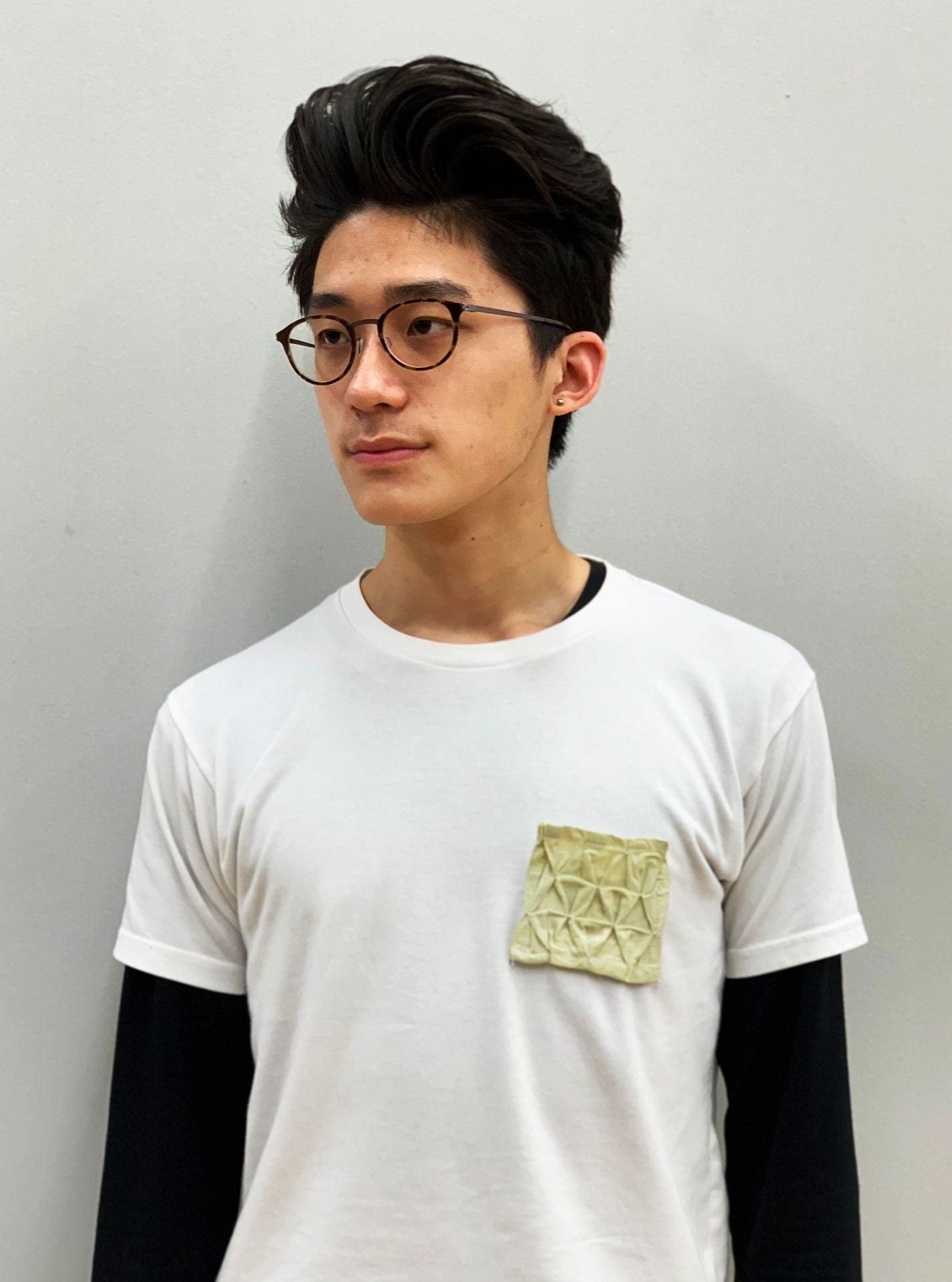The PH Natural Dye project is very interesting in the sense of being like a treasure hunt, but tiring at the same time, because the travel distance between the spots are a little bit far for walking. For this project I chose red cabbage to extract color pigments from and baking soda as the mordant. After cooking the red cabbage for an hour, I soaked washed muslin strips into the pot for two hours, so they could absorb as much pigments as possible. After that, I took four strips and immersed them in cups holding the collected water samples and each with one table spoon of baking soda added. The result showed that there was not much difference in terms of the PH of the water samples collected, because the muslin strips all turned into the same shade of green after dipped in the mordant solutions. Thus, for the application on my final product, I decided to use tap water, because it provides the same result and is much easier to acquire.
Date: 04, 03, 2019 Season: Spring
Plant Used: red cabbage
Why did you collect this plant for the purpose of creating a natural dye?
Red cabbage is rich with color pigments, thus making it a nice plant to create natural dye with
Location Collected (insert image of the plant and location?) Ask the vendor questions about the item you chose. What is the growing season for the food or plant item? Where is the farm located? Where do the items come from? Map it:
The red cabbage is from California and it typically grows during winter in Mediterranean climate, however, the exact location of the farm where the cabbage was grown is unknown.
Which Protocol you are using?
Dye Recipe
Fabric: Muslin
Dye/volume: 235 milliliters
Mordant/amount (measure given amount using measuring spoons): 1 table spoon of baking soda
Additions/amount (What changes did you make? Pull some wool out for each stage of trial): 235 milliliters
What do you predict will be the outcome?
I don’t think the colors of each fabric is going to be as different since they are all using the same mordant
Extraction process notes (include reflections on what happens in the process of your analysis):
The dye is rich in color which will create good result
Reflections about the pollution results and PH of water conclusion:
As result, all the fabrics turned from purple to green, with fabric dipped in water from Pier 4 having the lightest color, Gowanus being second, Prospect park third, and fabric dipped in Tap water having the darkest color. But just as I predicted, the color difference between the fabrics is not significant. It shows how this is not a good method to indicate any sort of pollution within the water samples.
The idea for my final product is to create a series of shirts with changeable chest pockets that are also naturally dyed. For the prototype, I did smocking, a sewing technic on a piece of muslin, and performed the process of dyeing it with the purple dye extracted from red cabbage. In order to make the pocket detachable, thus changeable, I used Velcro as the mechanical connection between the pocket and the shirt. It is fairly effective in terms of functionality. The final product is not as ideal as I hoped it would be. Since I did smocking prior to dyeing the fabric, as the pocket dried, the fabric became wrinkled, and I was not able to iron it flat. For the next pocket I make, I would dye the fabric first, iron it, and then do the smocking.




